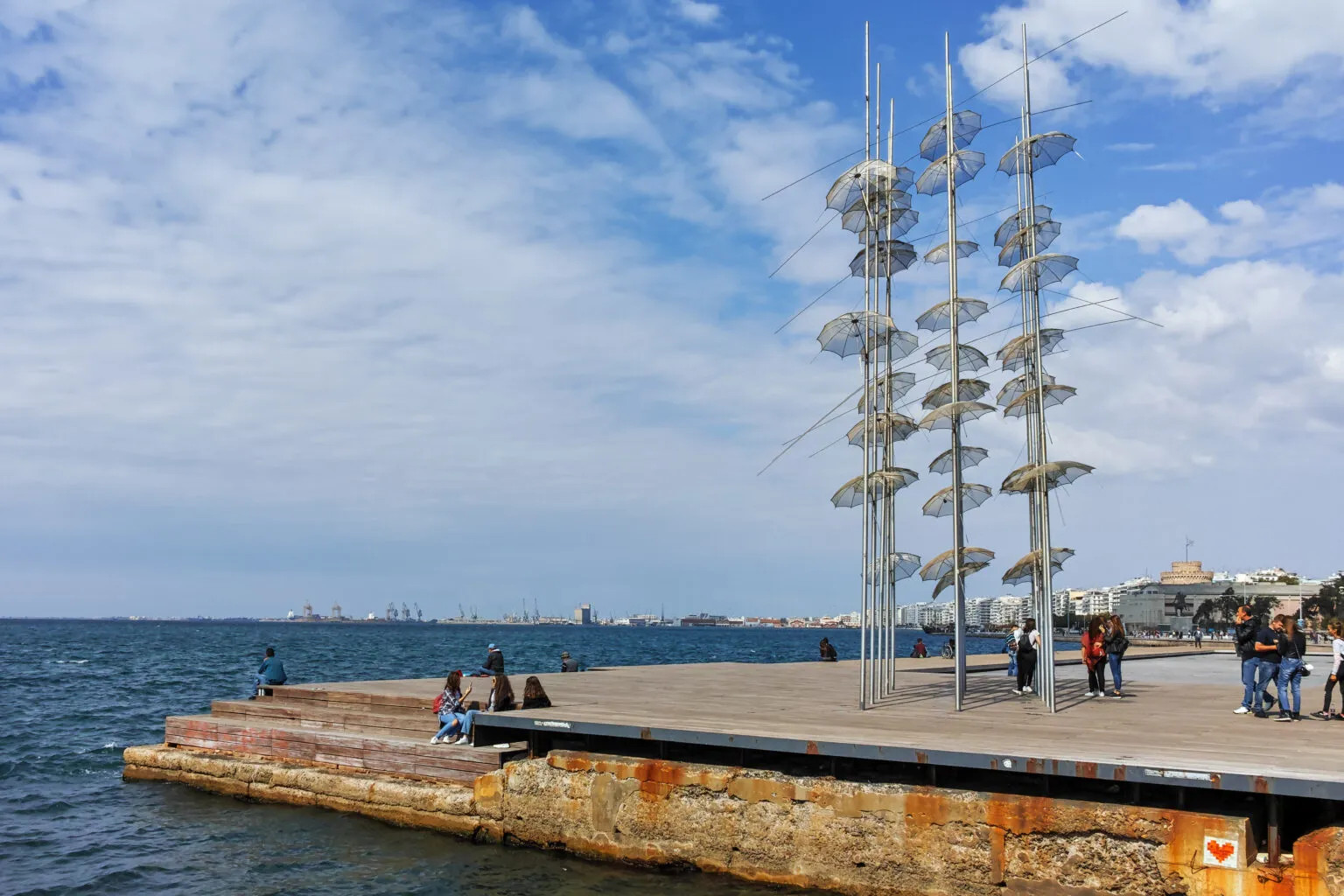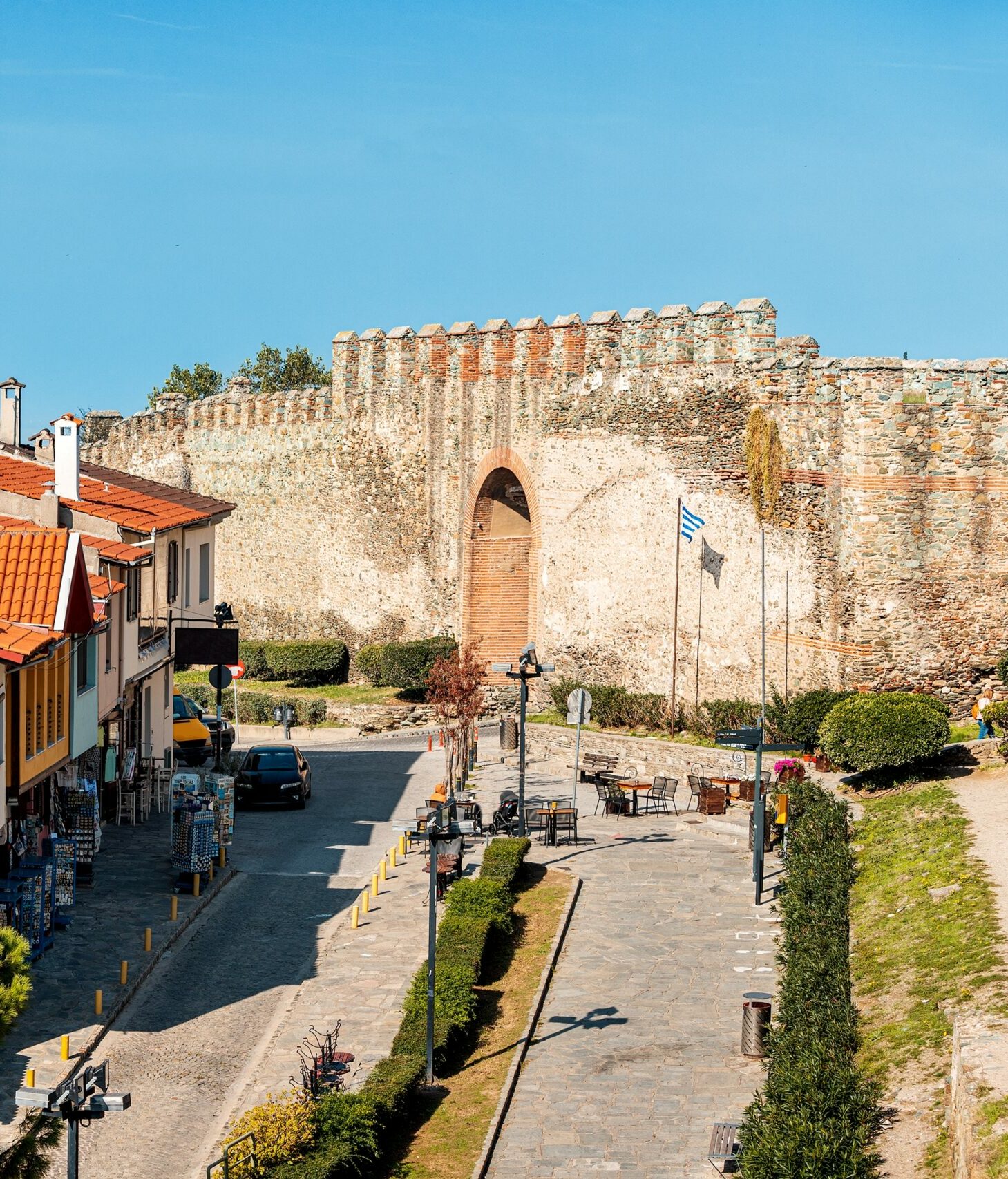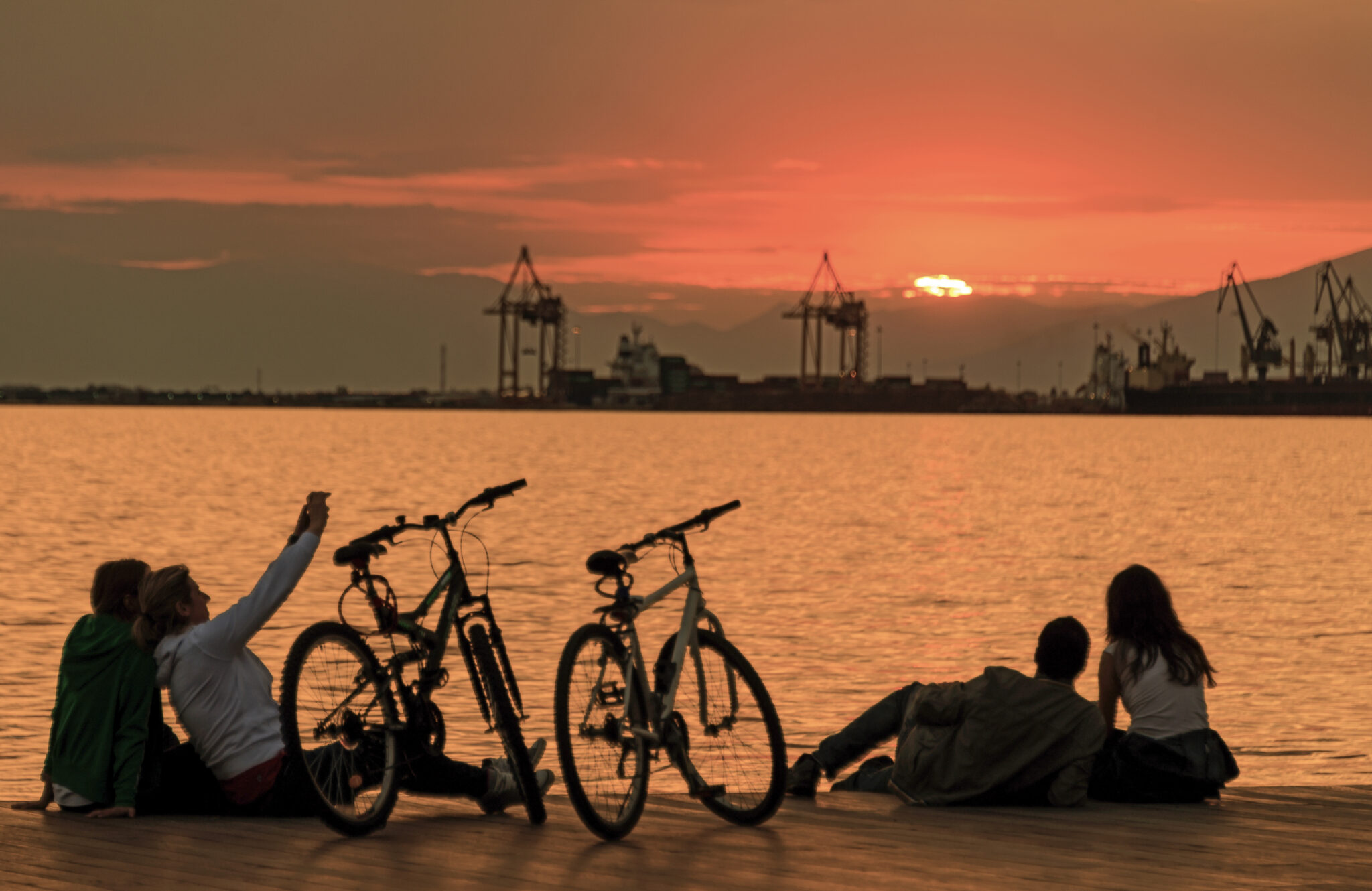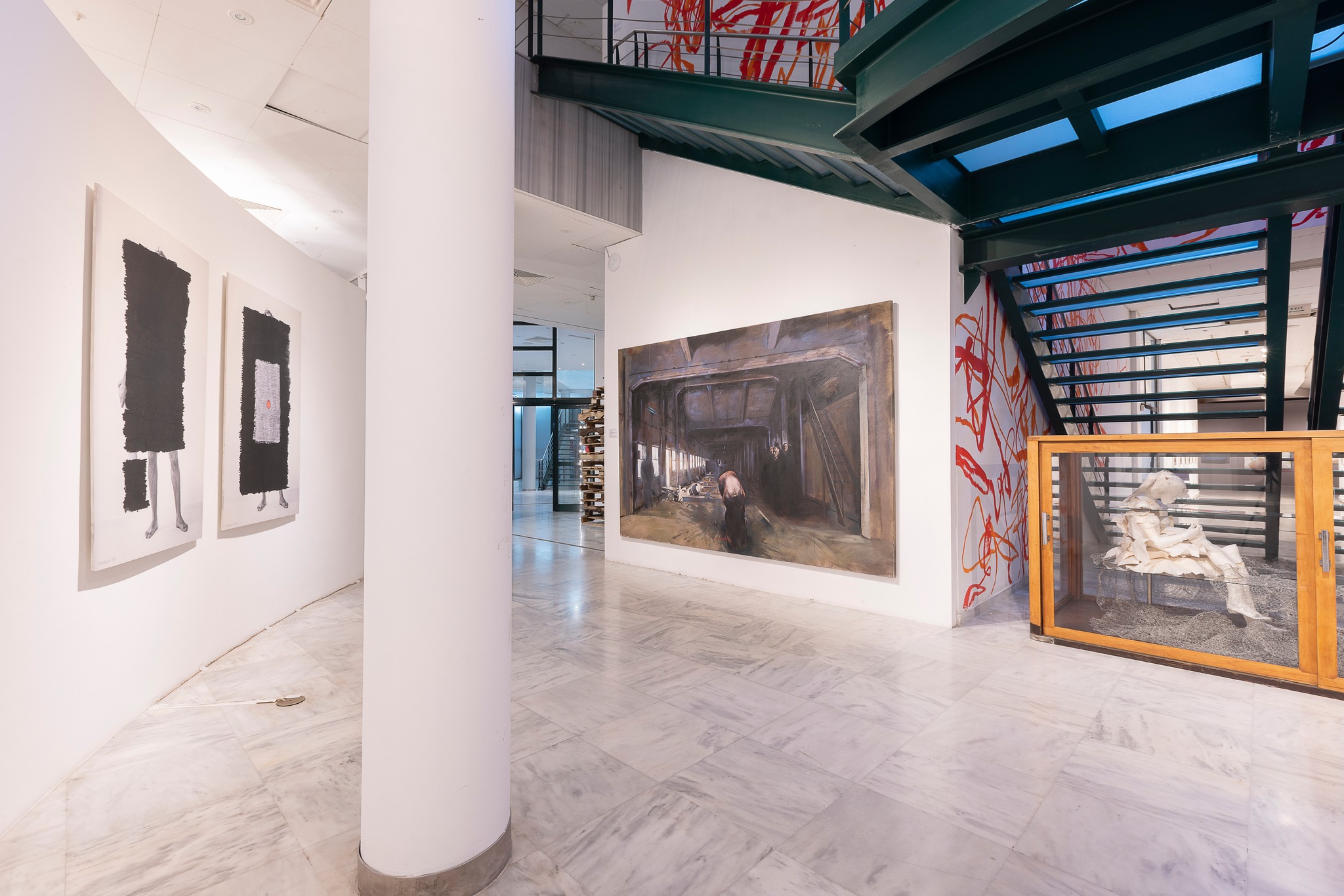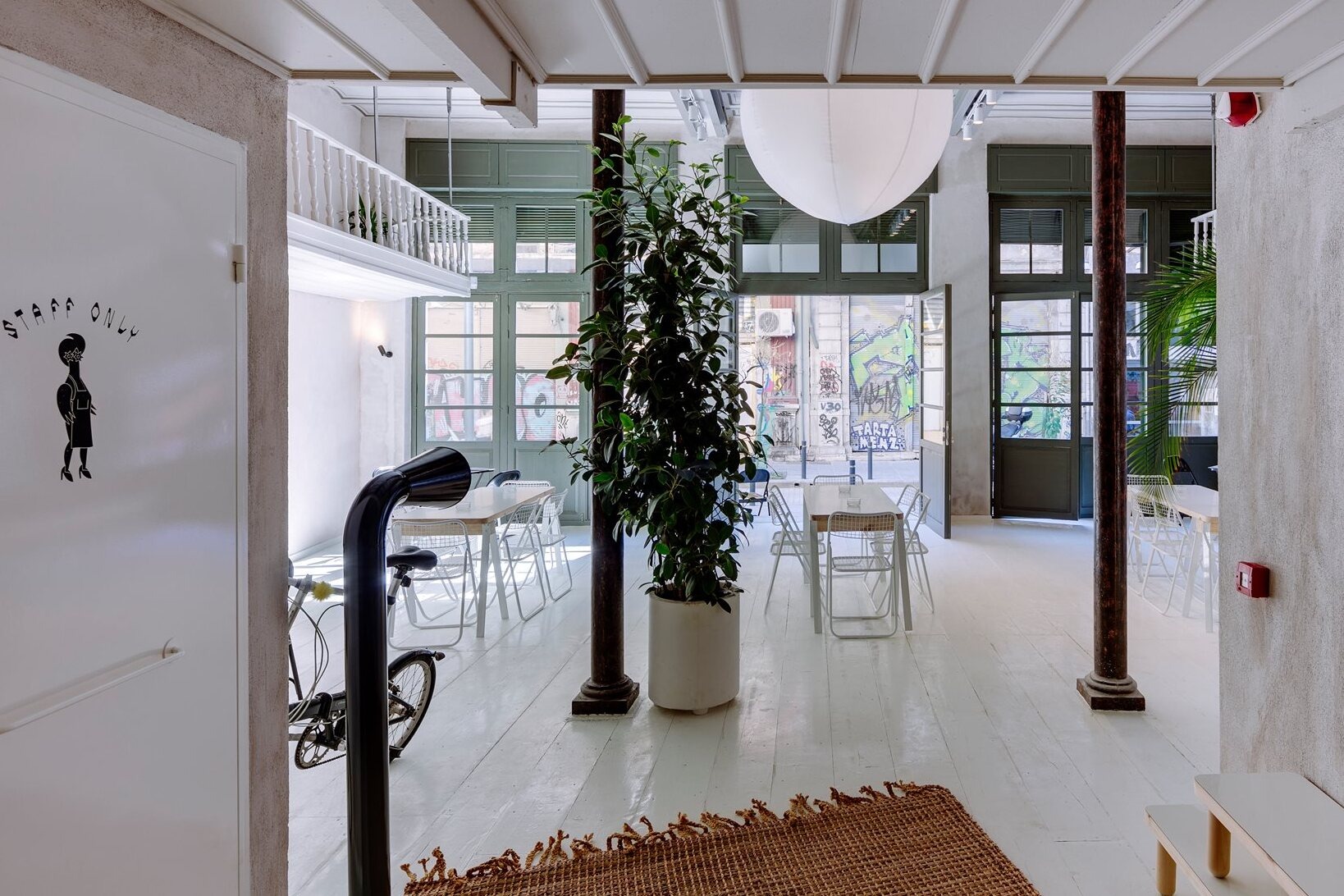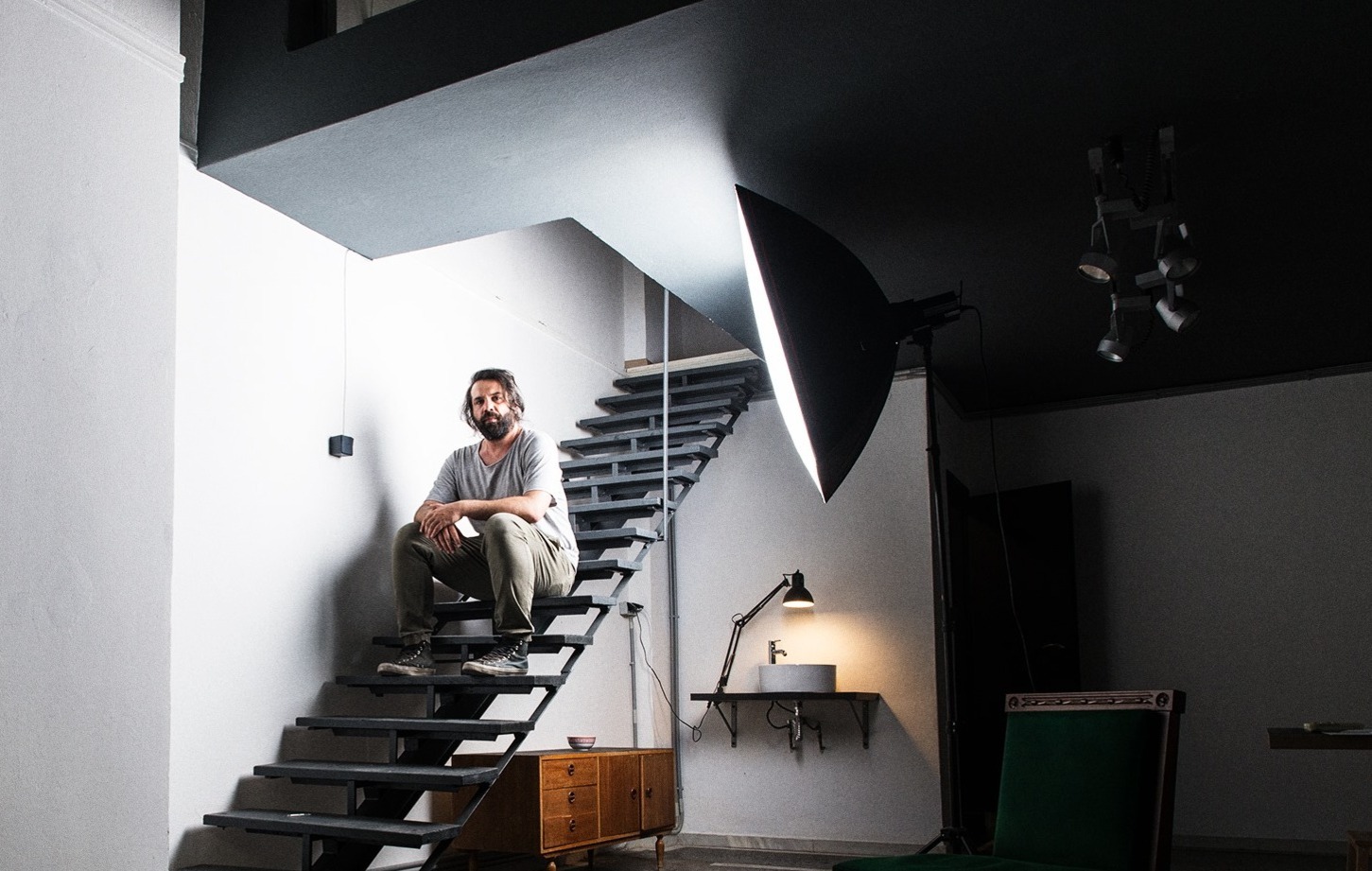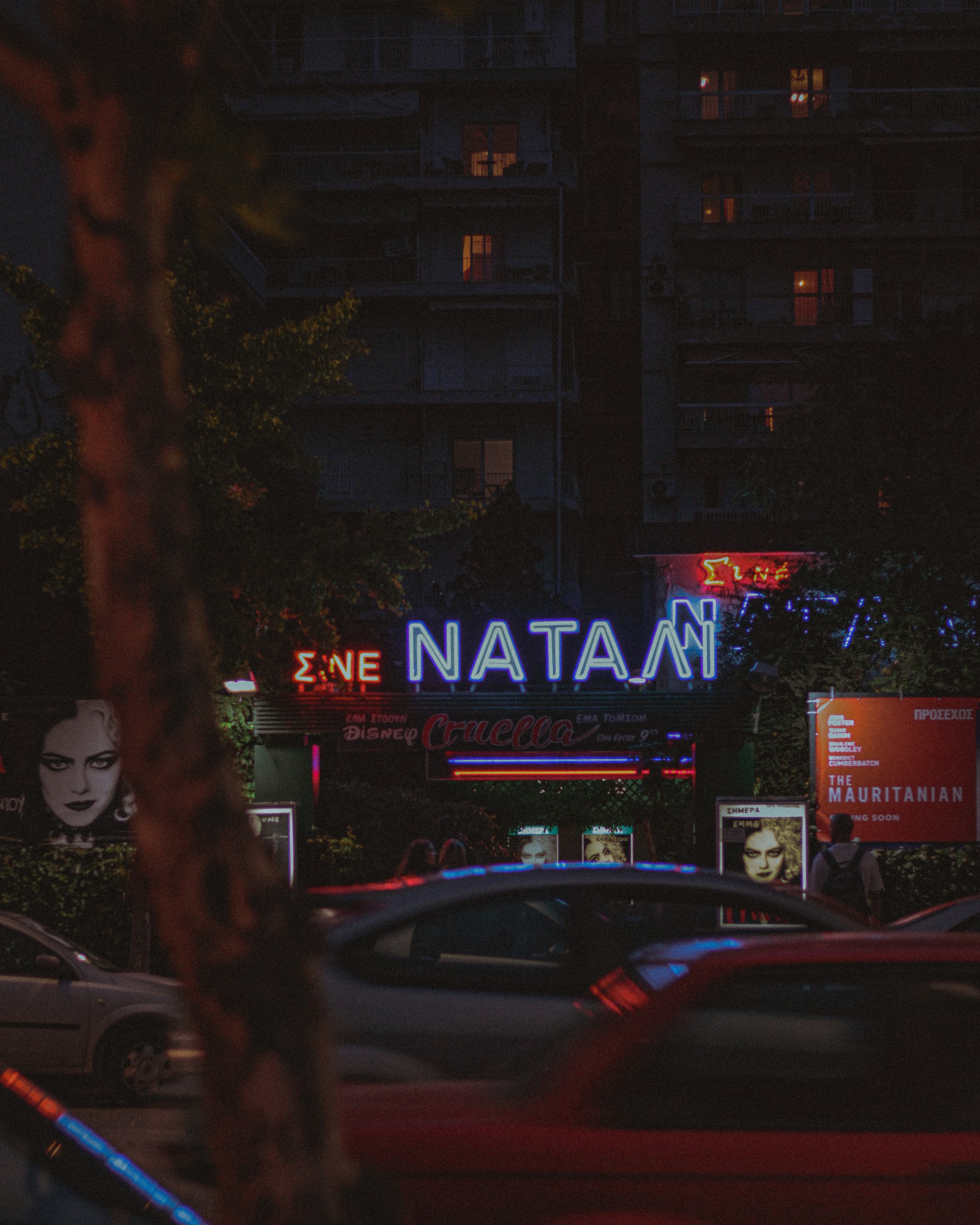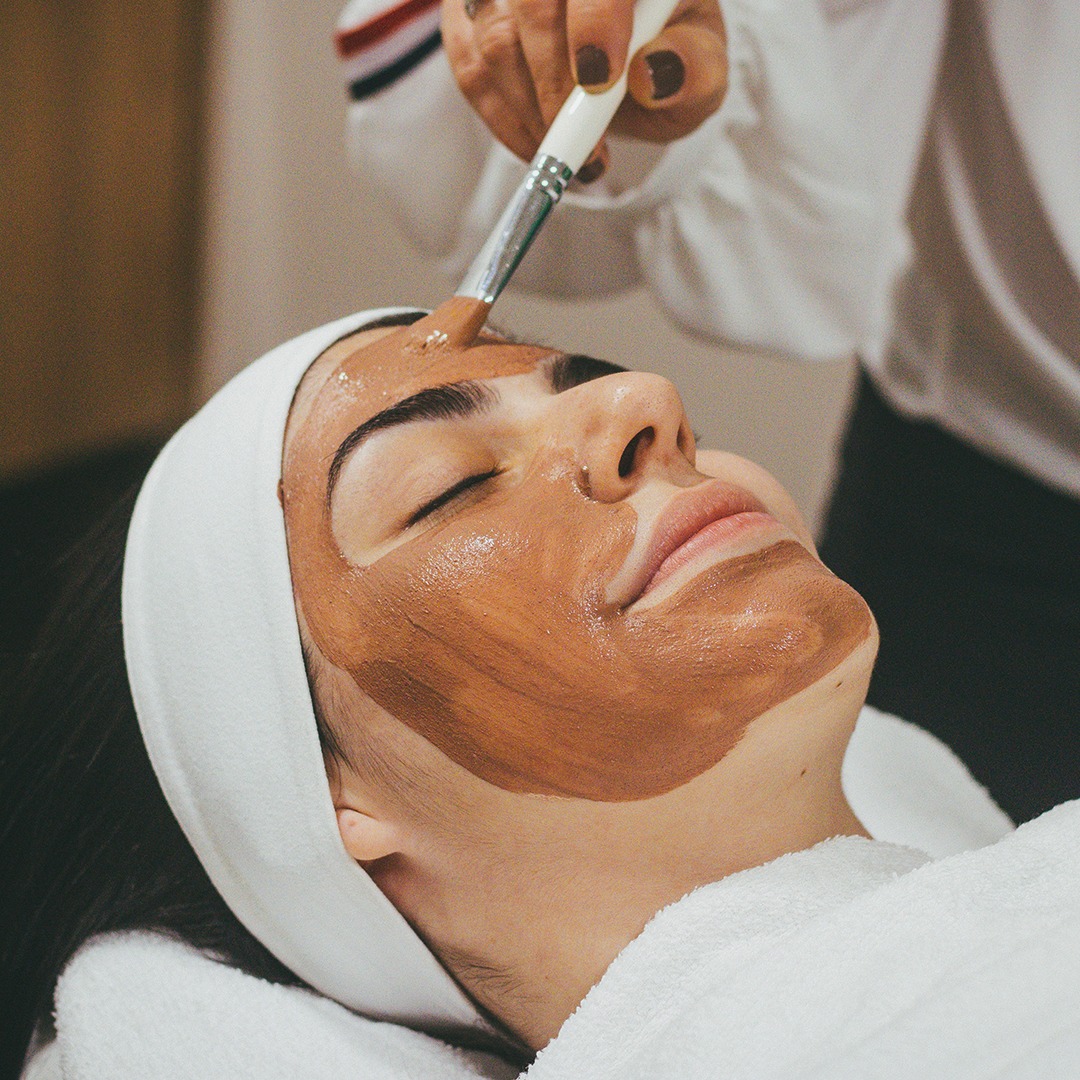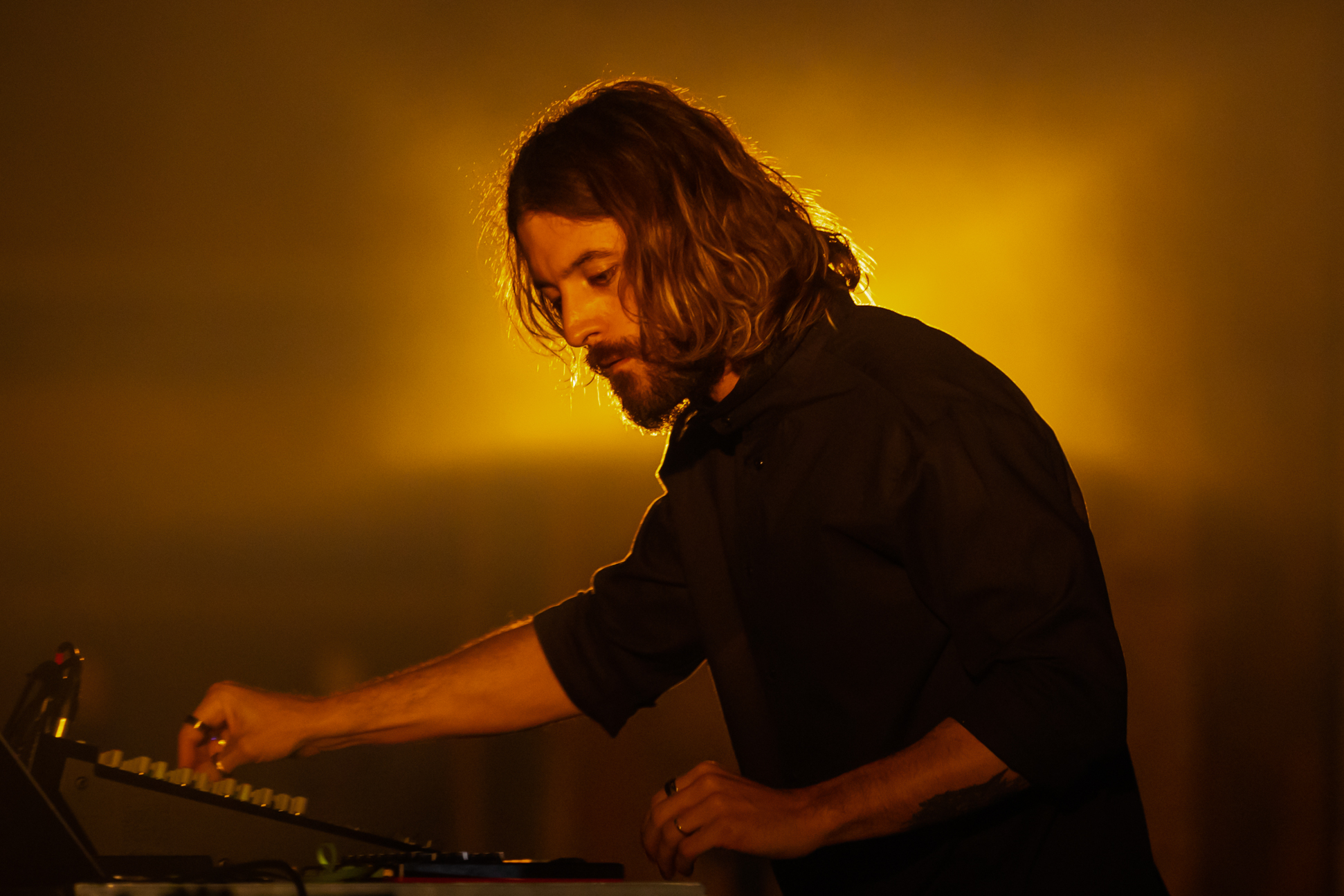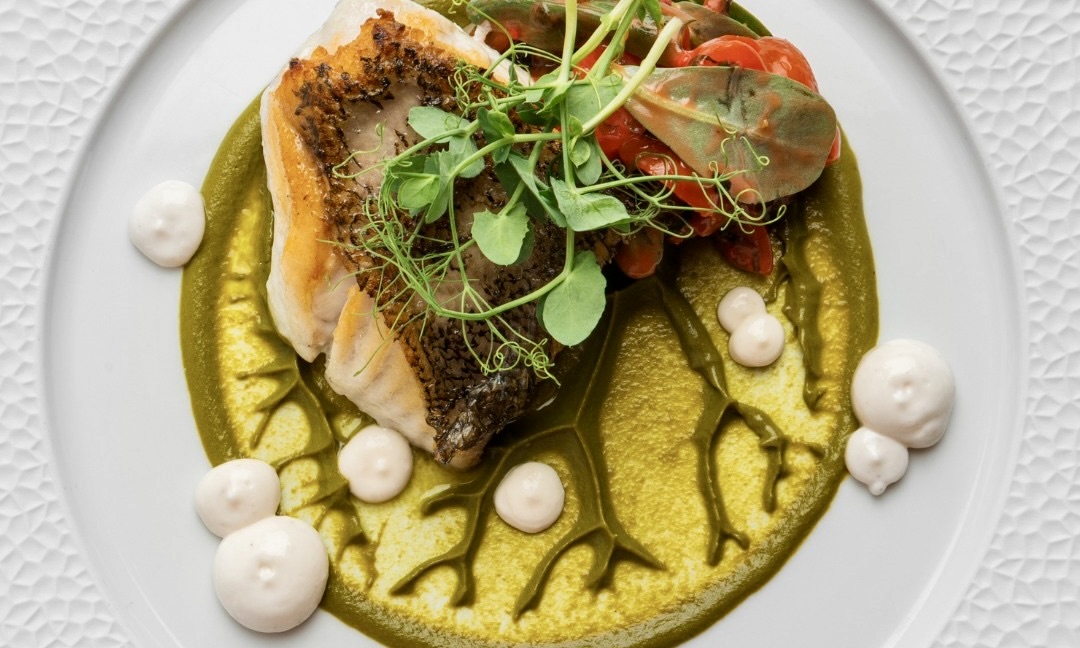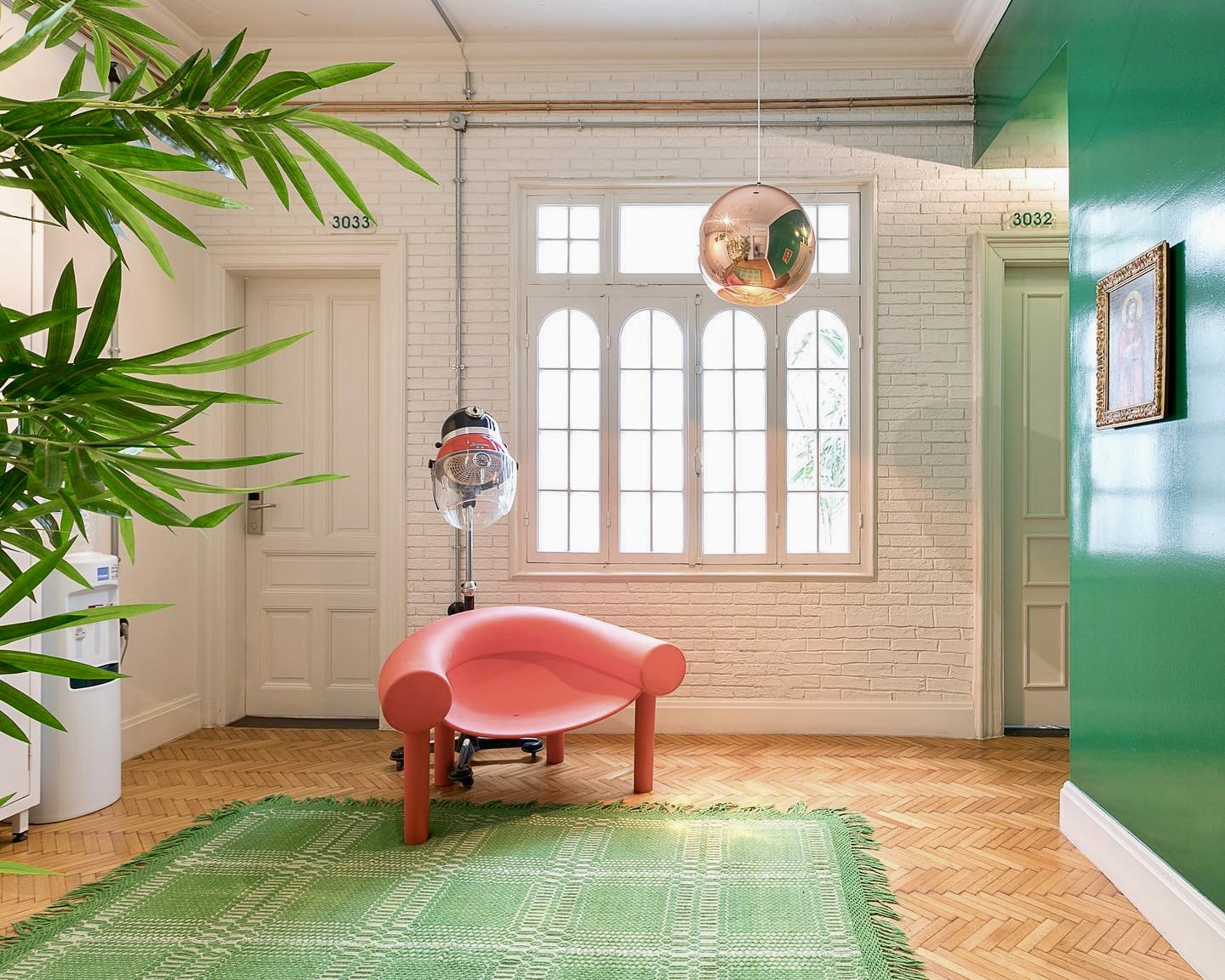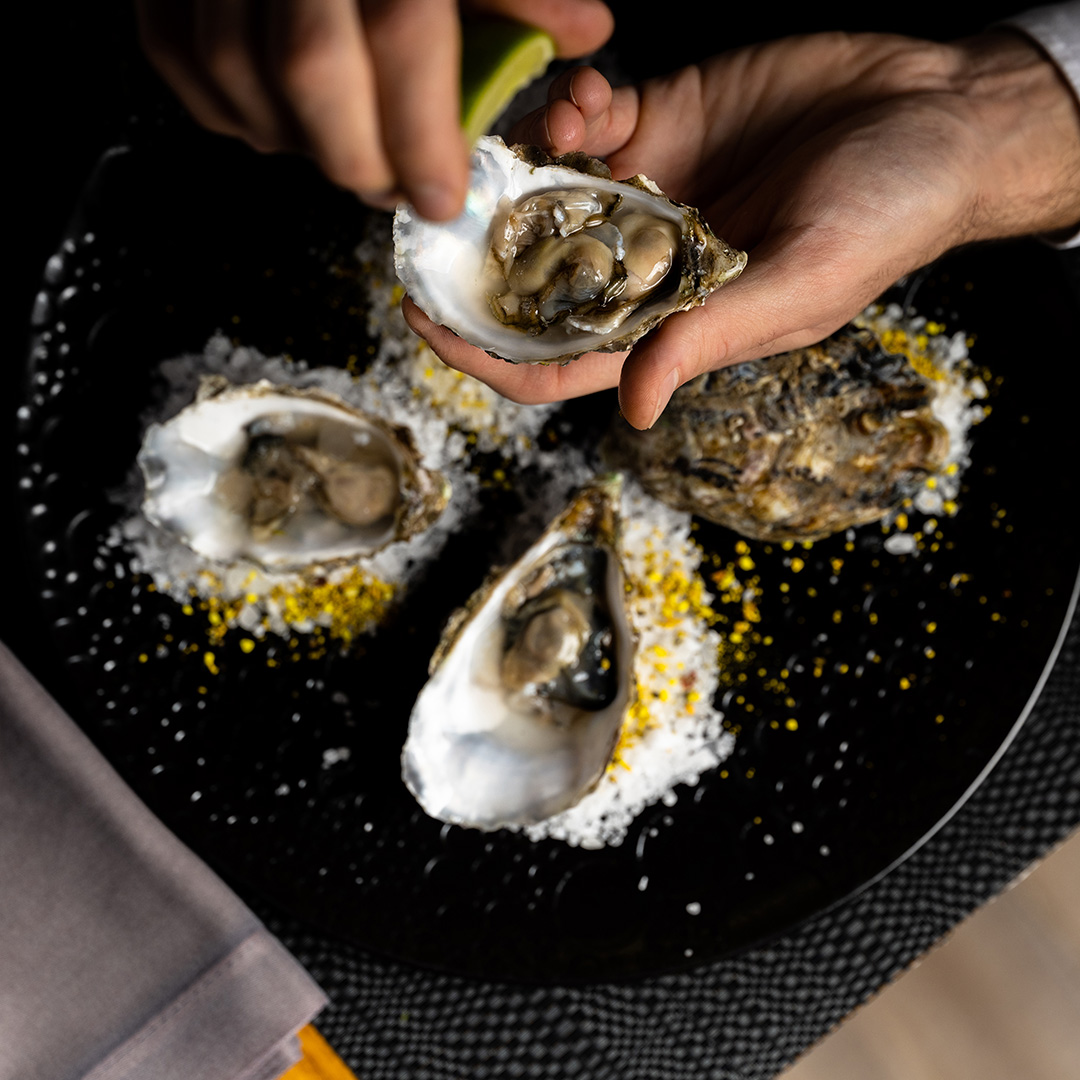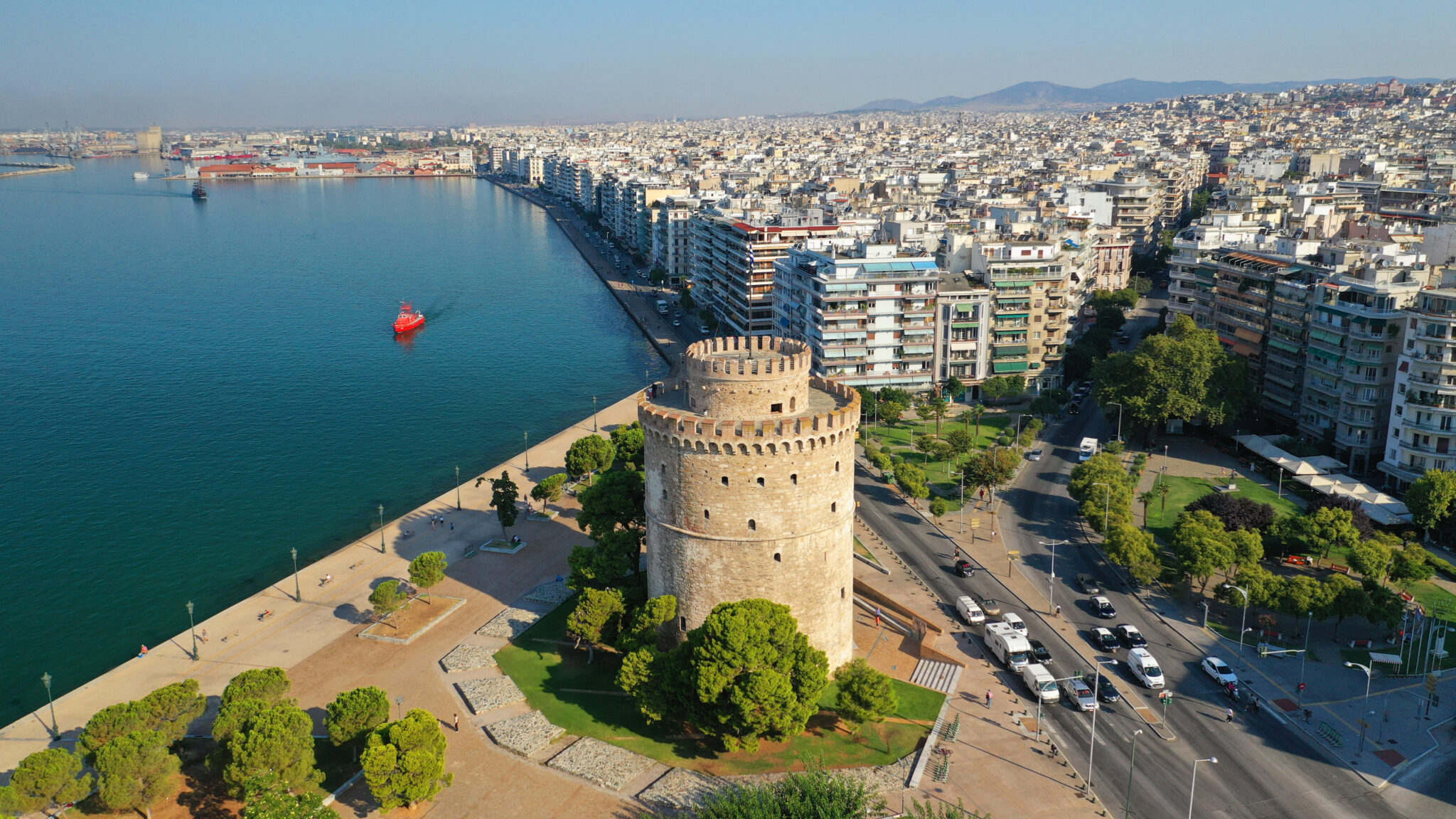The idyllic city of Thessaloniki stands out with its vibrant rhythms, the unique energy of its people, and its liveliness around the clock. Generally, it is a city that never rests, from the morning with its cafes, markets, and bustling waterfront to its intense nightlife that stirs up both locals and travelers alike. Indeed, beyond the intensity that characterizes it, Thessaloniki also boasts spots that reveal its natural beauty, its serene and romantic side, and incredible places for day trips for leisure, which you are very likely to have not visited yet.
In this article, we take you beyond the city’s many magnificent classic areas and historical sights to present the contemporary spots and experiences that will help you connect with the city’s heartbeat and experience it from a fresh and local point of view.
No matter how many times one visits Thessaloniki, missing out on visiting the Ano Poli (‘upper town’) means they won’t grasp the “soul” of the city. Away from the daily hustle and bustle of the centre, Ano Poli stands as an oasis and a gateway to a journey into Thessaloniki’s vast cultural journey through the ages, so before delving into its more modern aspects, it’s a good place to start.
The narrow streets, fountains, mansions and churches, among other landmarks, reflect the city’s cosmopolitan character throughout its historical path and will offer you a perspective of how much it has changed today. Having survived the catastrophic fire of 1917, Ano Poli has remained unchanged and labyrinthine, serving simultaneously as a living museum and a vibrant space full of life.
Explore Thessaloniki’s vibrant streets on a bike, to get a good feel of the city. Led by expert locals who know the city inside out and are eager to unveil its less-trodden paths, these tours on standard and electric bikes will take you to places you are unlikely to see on your own. Weave through quaint neighbourhoods and down major roads such as Egnatia Street, discovering lively markets and quiet streets with quaint or quirky details.
Suitable for anyone comfortable on a bike, the tours span between one and three hours, sometimes including stops at various locales. If you prefer a solo adventure, consider renting a bike and starting at the picturesque seafront promenade.
MOMus, or the Metropolitan Organisation of the Museums of Visual Arts of Thessaloniki brings together four of the city’s most esteemed institutions dedicated to the advancement and appreciation of visual arts and Greek heritage globally: the State Museum of Contemporary Art, the Macedonian Museum of Contemporary Art, the Thessaloniki Museum of Photography and the Contemporary Art Centre of Thessaloniki. This consortium presents an eclectic mix of permanent exhibitions that span a range of artistic disciplines. MOMus is celebrated as the quintessential centre for contemporary art in Thessaloniki, providing a comprehensive and immersive art experience.
Ypsilon stands out in Thessaloniki not just for its café and social scene, but for its unique co-working space that marries the building’s 1870s architectural grandeur with a fresh, contemporary industrial design, a fusion that creates an inspiring environment for professionals and creatives alike.
With white walls and furniture softened by verdant indoor plants and natural light offers a prime spot for visitors and locals alike, seeking a workspace that offers peace while also helping them feel plugged in to the city’s rhythm.
In the shadow of the Byzantine walls, the neighbourhood around the 14th-century Church of the Holy Apostles has emerged as a cultural hotspot. Historical landmarks like the Ottoman-era Pasha Hamam, stand surrounded by a mix of architectural styles, from Bauhaus to contemporary buildings.
Some of these spaces now host a vibrant community of creatives, like graphic designer Mike Rafail. The artist stands out with his initiative, That Long Black Cloud, a design studio & interactive space that fosters creativity through exhibitions and graphic design workshops. The space also features a boutique with unique ceramics and apparel.
The vast suburban hilltop Sheih Sou Forest to the north of Thessaloniki, the city’s green lung, serves the city’s residents as a recreational and relaxation area despite disasters and hardships. Originating from the planting of over 5 million trees, it became the largest artificial forest in the Balkans, though much of it was destroyed in the 1997 fire. The forest is suitable for all kinds of activities. There are six main paths, marked with the letter “M,” and one of the most popular choices leads to the “Krano” point at 450 metres above sea level, from where you can enjoy wonderful panoramic views over the city.
Seih Sou Forest has an impressive diversity of 277 plant species, prominently featuring varieties of pine trees, cypress trees and majestic plane trees. It is also a sanctuary for a wide array of fauna, providing a habitat for mammals like hares, foxes, weasels, and hedgehogs, around 80 bird species, including the majestic short-toed snake eagle, the melodious common cuckoo and nightingales. The water bodies are teeming with life, home to salamanders, frogs, turtles, grass snakes, and lizards.
For Greeks, summer in the city equates to refreshing open-air cinema nights under the stars. Three of Thessaloniki’s summer cinemas you should visit are Cinema Ellinis (11 Stratou Avenue, Phone: +30 2310 292304), hidden away in a lush garden and offering a serene escape from the city’s hustle with its inviting Greek-themed decor in blue and white; Cinema Apollo (Address: 4 Sarantaporou, Phone: +30 2310 828642), which stands out for its superior sound quality and immersive viewing experience, presenting a wide selection of films, and Cinema Natalie (3 Megalou Alexandrou Ave, Phone: +30 2310 829457), beloved for its contemporary movie offerings and exceptional location adjacent to the iconic Umbrella art installation.
Cold beer, good company and a game of pool are a great way to enjoy a Thessaloniki afternoon. Login, the city’s iconic pool hall on Kamvounion Street, captures the essence of the area long before the arrival of the trendy shops you’ll find in the area today. Dimitris Logginidis, a veteran in the pool business, transformed a cafe into this social spot in 1985. This venue quickly became a favourite among generations of students, serving as a casual hangout and a serious practice venue for aspiring athletes.
Hidden near Thessaloniki’s historical quarter, Pasha Gardens in Agios Paulos (behind the Byzantine Walls off the Elenis Zografou road) is an enigmatic park shrouded in greenery and mystery. This secluded oasis, veiled behind modern structures, harbours a collection of curious stone formations reminiscent of a fantasy landscape, complete with an ornamental fountain and secretive tunnels. The origins of its mystical designs and symbols spark intrigue, with tales hinting at connections to ancient mystics or hidden catacombs. Marked by a 1904 inscription, its history is a tapestry of theories.
Take a Spa Break at one of the city’s top spas, as a little pampering goes a long way, especially after hours of touring the city. Idolo Spa, located at (11B Chrysostomou Smyrnis), offers a tranquil escape with treatments that blend natural elements such as marine extracts, bamboo, vitamin C, and papaya seeds. The serene ambience and unique water beds provide a perfect setting for unwinding.
Physis Massage Therapy (62 Tsimiski) is another great choice, known for its array of therapeutic services, from deep tissue massages to innovative techniques like cupping and Gua Sha, all in a zen-like atmosphere where the scent of essential oils fills the air.
Animus Massage (14 Olympiou Diamanti) stands out for its personalised approach to massage therapy, focusing on balancing both mind and body with tailored treatments, while Luxury Living Spa (93 Tsimiski) elevates the spa experience, offering luxury treatments in a lavish setting to ensure a pampering session that rejuvenates both the body and spirit.
The Experimental Centre for the Arts, part of the Metropolitan Organisation of Museums of Visual Arts, serves as a dynamic hub for artistic exploration and expression in the northern capital. Dedicated to showcasing a diverse range of artistic endeavours, this space supports emerging talents, serving as a vibrant incubator for creativity, where artists are encouraged to push the boundaries of conventional art forms and explore new horizons, offering both artists and visitors alike the opportunity to engage with the avant-garde in art.
The Depot neighbourhood, with its French-inflected name, echoes the grandeur of the Belle Epoque, and the area’s name is derived from a now-closed tram depot situated on Vasilissis Olgas Street. This depot, active from 1893 to 1957, was a pivotal site, serving as the origin for a tramline that once connected the city to the seaside. Today, amidst the greenery, visitors can explore unique cafes like Birdie Num Num and Oraio Depot, while the store Penelope Loom stands out for its hand-woven art and eco-friendly creations by Merope Ververi, made from local wool.
Nearby, the Municipal Art Gallery in Casa Bianca, a beautifully maintained monument of contemporary architectural heritage, and one of the city’s most beautiful mansions, presents a permanent collection of works by Nikolaos Gyzis, as well as Byzantine and post-Byzantine icons from the cemetery temple of Evangelistria. The elegant Villa Allatini further up the street adds to the area’s historic charm.
Near the historic 5th-century Church of the Acheiropoietos, this segment of the city brims with notable spots. Behind the church, the square hosts Shed (11 Patriarchou Dionisiou), a café with a Japanese twist, offering delights such as matcha lattes. A short stroll away, the artistic La Nina Frida (4 Acheiropoietou), blends coffee culture with art, inviting visitors to discover the current exhibitions. Nearby, NR40 Urban Arts (10 Platonos) serves as a dual cafe bar and gallery space, spotlighting local artists’ works. Above, a studio offers tattoo and piercing services, adding another layer to the area’s eclectic cultural fabric.
Discover an eerie landscape representing the closest remnant of the Gothic era in modern Greece in Nea Chalcedon, near Thessaloniki. The medieval graveyard of Aghia Eleoussa (St Eleoussa) church, contains mystical stone Gothic crosses marked with a circle. These were created by the Bogomils, a dualist religious and political sect that was prominent in the Balkans from the 10th to the 15th centuries, particularly in present-day Bosnia. Between 15-20 Celtic crosses, now partially covered in moss, rise from the ground to a height of two metres. Gaping holes beneath the graveyards hold remnants of the gravediggers who passed through the area over previous centuries. Scholars suggest that one of the routes from where Bogomilism entered then medieval Greece was through the famous Via Egnatia, from Dyrrachium (modern-day Durres in Albania) in the west, through the breadth of the Balkans onto to Thrace and Constantinople in the east.



